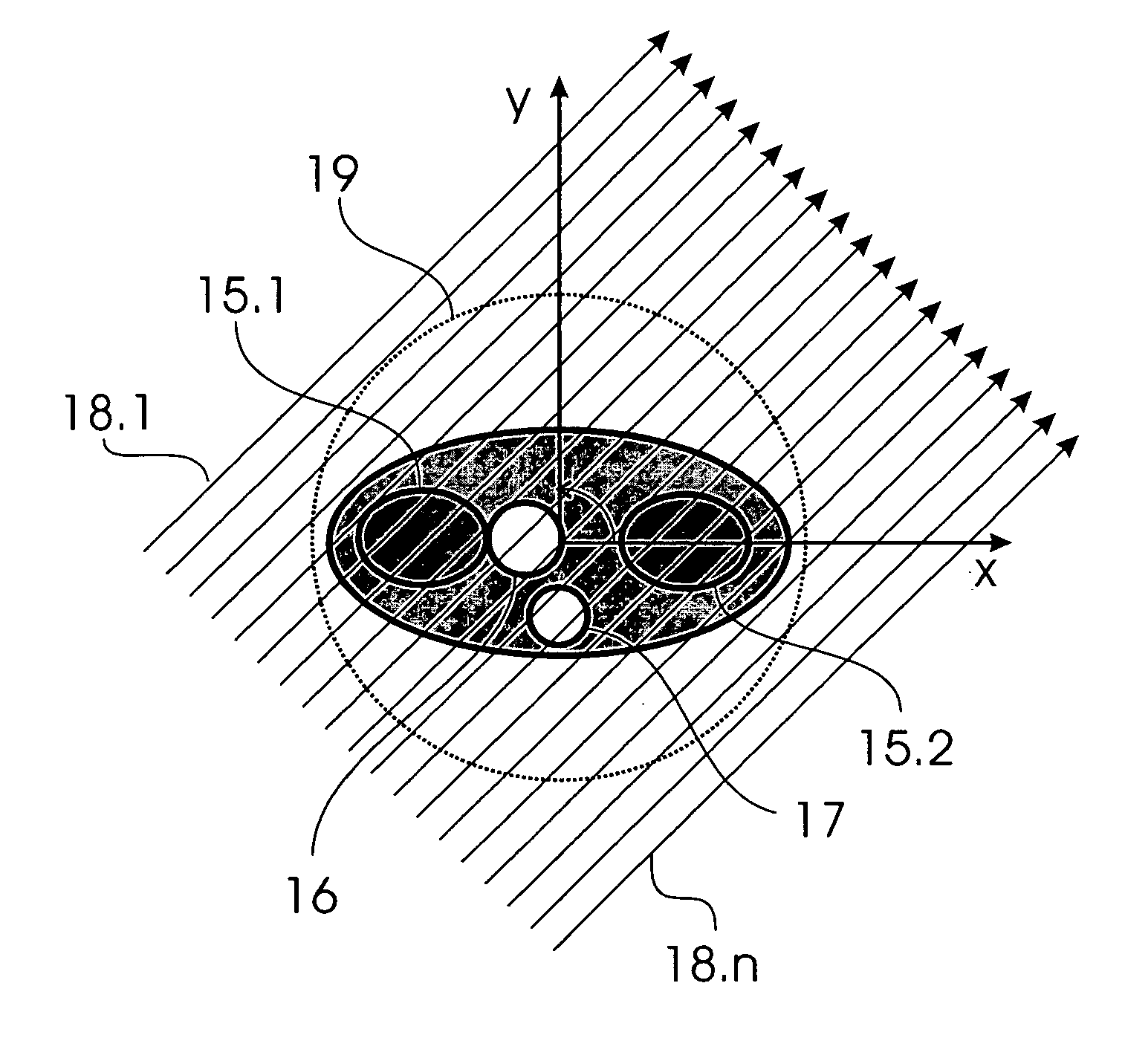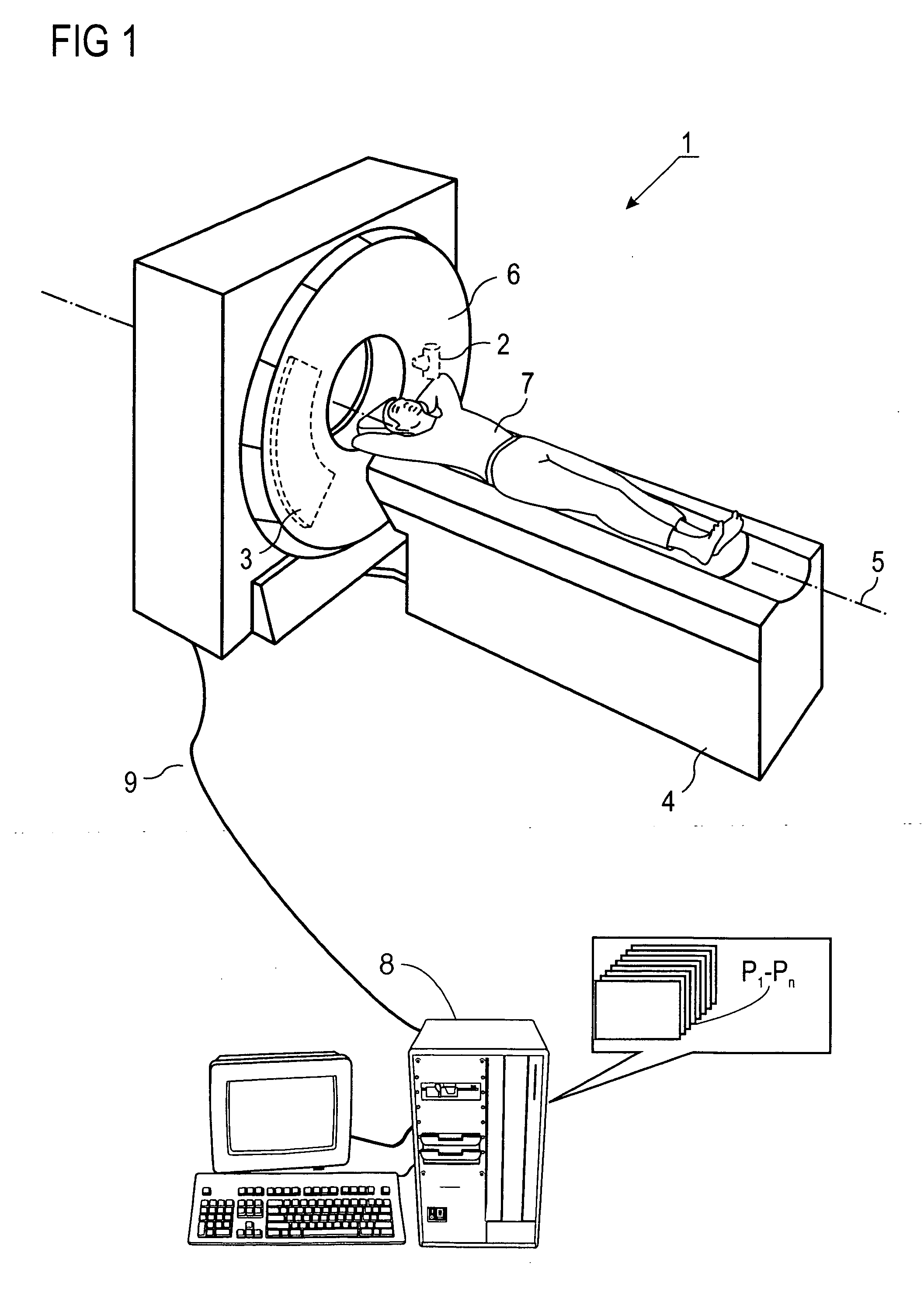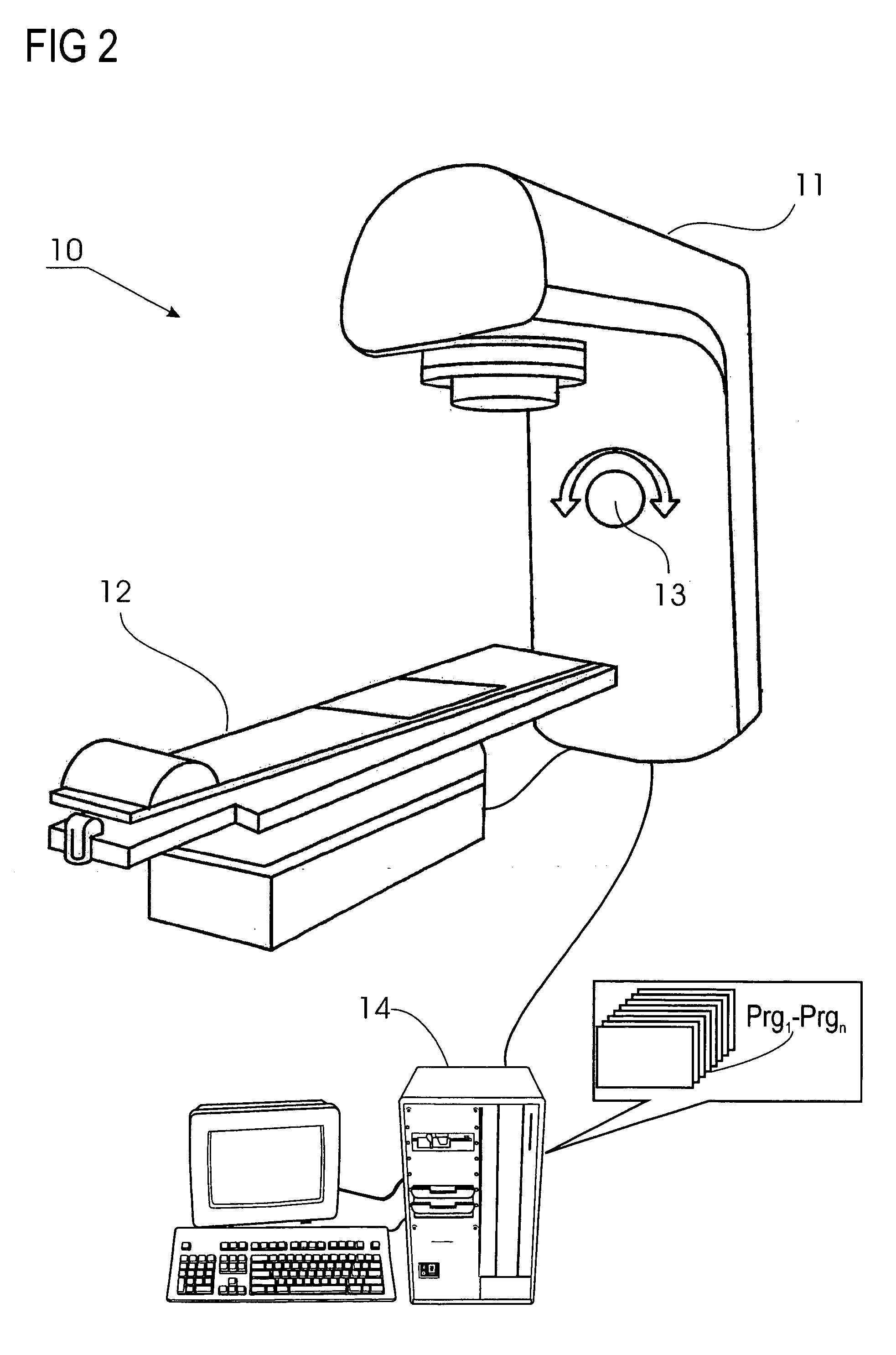Method for planning the radiation therapy for a patient
- Summary
- Abstract
- Description
- Claims
- Application Information
AI Technical Summary
Benefits of technology
Problems solved by technology
Method used
Image
Examples
Embodiment Construction
[0030]FIG. 1 shows such a computed tomogram 1, which, for the purpose of scanning a patient, has an X-ray tube 2, rotating on a gantry 6 around a patient 7, with a concomitantly rotating multirow detector 3 arranged opposite. For the purpose of scanning, the patient 7 is pushed using a patient's table 4, which can be moved along the system axis (z axis) 5, while the gantry 6 is rotating, which means that a spiral scan is produced relative to the patient 7. This operation is controlled by a control and processing unit 8 which is connected by way of control and data lines 9 to the drive unit of the CT, to the X-ray tube, to the drive for the patient's table and to the multirow detector 3. This control and processing unit 8 also evaluates the collected CT data and calculates the CT images. This is essentially also done using the programs P1-Pn (shown symbolically).
[0031] With appropriate configuration, this processing unit may also be used for the irradiation planning after the target...
PUM
 Login to View More
Login to View More Abstract
Description
Claims
Application Information
 Login to View More
Login to View More - R&D
- Intellectual Property
- Life Sciences
- Materials
- Tech Scout
- Unparalleled Data Quality
- Higher Quality Content
- 60% Fewer Hallucinations
Browse by: Latest US Patents, China's latest patents, Technical Efficacy Thesaurus, Application Domain, Technology Topic, Popular Technical Reports.
© 2025 PatSnap. All rights reserved.Legal|Privacy policy|Modern Slavery Act Transparency Statement|Sitemap|About US| Contact US: help@patsnap.com



